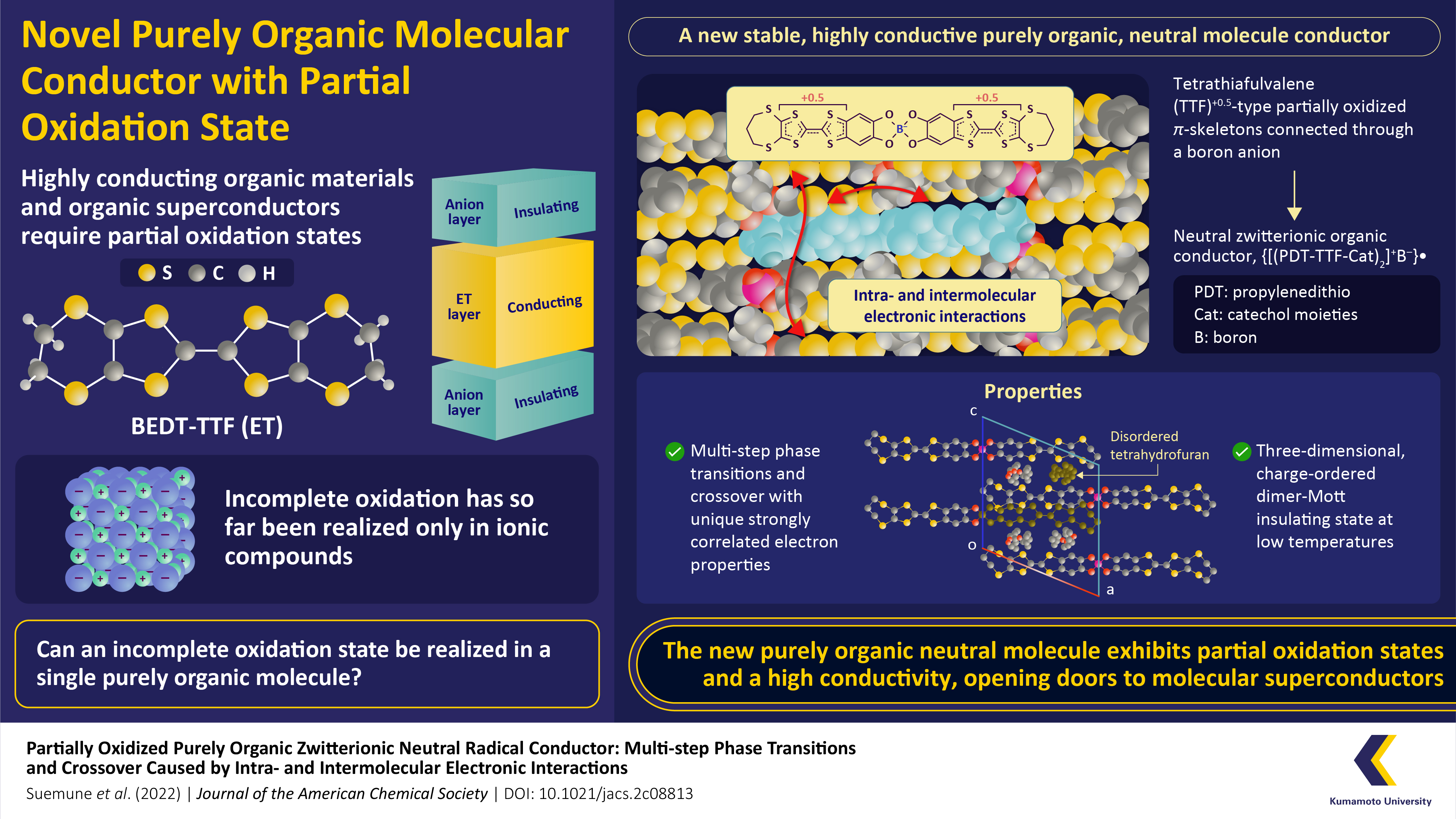Towards Highly Conducting Molecular Materials with a Partially Oxidized Organic Neutral Molecule

In an unprecedented feat, researchers from Japan develop an organic, air-stable, highly conducting neutral molecular crystal with unique electronic properties.
Conventional organic materials are poor conductors of electricity. In order for an organic material to be a good conductor, it needs to be in a “partially oxidized” state. In a new study, researchers have now developed such an organic neutral molecule with an incomplete oxidation state for the first time. Comprising both positively and negatively charged moieties and featuring unique electronic properties, the new organic molecule could potentially revolutionize materials science and chemistry.
Typical organic substances such as paper, sugar, and naphthalene are composed of electrically neutral molecules that are poor conductors of electricity. Since the advent of superconductivity, there has been a renewed interest in highly conducting organic materials. It has been demonstrated that the key to excellent electrical conductivity is a combination of an electron-donating molecule and an electron-accepting molecule, known as a “charge transfer complex” that is characterized by an “incomplete oxidation state.” Such an incomplete or partial oxidation state has been realized only in ionic compounds so far. However, superconducting thin films with useful features like excellent solubility and workability require single organic small molecules with a partial oxidation state. Equivalently, the development of small organic molecules with both positively and negatively charged groups, commonly known as “zwitterions,” could potentially revolutionize superconducting technology.
To this end, a team of researchers from Japan, led by Dr. Akira Ueda from Kumamoto University and including Mr. Taro Suemune and Mr. Keita Sonoda from Kumamoto University, Dr. Shuichi Suzuki from Osaka University, Dr. Hiroyasu Sato from Rigaku Corporation, and Dr. Tetsuro Kusamoto from the Institute for Molecular Science, has now developed a single purely organic neutral molecule with an incomplete oxidation state for the first time. In a recent article made available online on November 22, 2022 and published in volume 144, Issue 48 of the Journal of the American Chemical Society on December 7, 2022, the researchers presented the details of the development of this purely organic air-stable neutral “zwitterionic” radical conductor. “It has been long believed that combining two (or more) types of ionic molecules is essential for achieving partial oxidation state in organic materials. Our research group has now overturned this common belief with our original molecular design. For the first time, we have succeeded in creating an ‘incomplete oxidation state’ with a purely organic neutral molecule,” explains Dr. Ueda, the corresponding author of the article.
The researchers connected two tetrathiafulvalene (TTF) +0.5-type partially oxidized “π-skeletons” through a negatively charged boron (B) ion to realize an unprecedented partial oxidation state in a single, purely organic, neutral zwitterionic molecule. The new molecule, namely a propylenedithio (PDT)-substituted derivative, {[(PDT-TTF-Cat)2]+B–}• , uses a boron anion B− as the linker to two partially oxidized TTF+0.5 skeletons through catechol (Cat) parts. This design facilitates intra- and intermolecular electronic interactions, the key to achieving incomplete oxidation states.
The team confirmed the formation of partially oxidized state by measuring the electrical resistivity and magnetic susceptibility of the molecules in the solid state, and using X-ray diffraction for its characterization. They further demonstrated that the partially oxidized state led to multi-step phase transitions and crossover, which provided unique strongly correlated electron properties to the neutral molecular solid. This manifested as a three-dimensional charge-ordered dimer-Mott insulating state at low temperatures.
Overall, the results indicate that the newly developed neutral molecular crystal could serve as a promising platform for studying molecular superconductors and strongly correlated molecular electronic systems. “We expect that the new development will lead to novel functional organic substances and materials,” concludes an optimistic Dr. Ueda.
Indeed, it could no less than revolutionize materials science!
About Associate Professor Akira Ueda
Dr. Akira Ueda is an Associate Professor in the Department of Chemistry, Faculty of Advanced Science and Technology and International Research Organization for Advanced Science and Technology (IROAST) at Kumamoto University, Japan. He completed his bachelors, masters and doctorate degrees from the Department of Chemistry, Graduate School of Science at Osaka University, Japan. His current research is in Organic Solid-State Chemistry, Physical Chemistry, and Functional Materials Chemistry. Dr. Ueda has won multiple awards, including the Chemical Society of Japan Award for Young Chemists (2016) and the Young Scientist Awards of the Japan Society for Molecular Science (2018). He has authored over 70 articles with over 2000 citations.
[Funding]
-
JSPS KAKENHI (JP19K05397)
-
The Iketani Science and Technology Foundation.
-
Nanotechnology Platform Program “Molecule and Material Synthesis” of Japan's Ministry of Education, Culture, Sports, Science and Technology (MEXT) (JPMXP09S21MS1073)

